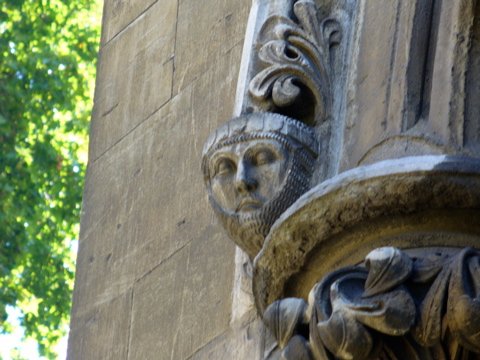
The Saturday after the IWM, I visited Westminster Abbey, where the kings and queens of England have come for the best part of a thousand years to be crowned, married and buried. (I’m way behind on these travel posts, I’ll still be writing them up a month after I get back.) No photography is allowed inside the Abbey, and as I obeyed this rule — unlike some people! — all of the photos will be of the exterior, which unfortunately is less than half the fun.
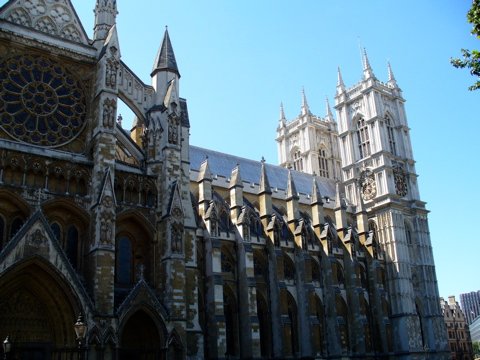
It’s actually hasn’t been an abbey since Elizabeth I kicked the Benedictines out for the last time, ie nearly 450 years ago. Perhaps one day the official name — the Collegiate Church of St Peter, Westminster — will catch on, but I wouldn’t hold my breath.
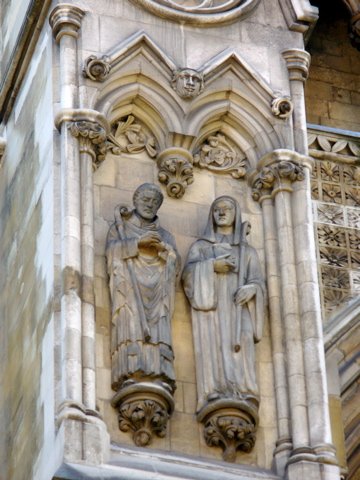
Who are these people? What are they doing on the side of a church? I don’t know, but I’m guessing they are saints.

It’s hard not to be impressed by the scale of the building, even today when there are plenty of other big buildings around. The effect must have been even more dramatic in the 13th century, which is when the building mostly dates to.

This lion, and the mail-clad visage at the start of the post, are on the northern side of the Abbey, near Parliament.

Jesus and the Apostles watching over the main entrance.
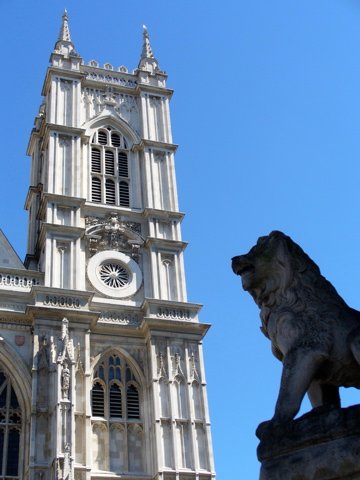
The towers at the northern end — one of which can be seen here — were built in the 18th century by Hawksmoor, which sounds like some dire prog rock outfit or perhaps an equally dire roleplaying campaign setting, but actually was an architect. The lion is part of what seems to be called Westminster Column, though there’s not much about in on the web. It was erected by old boys of the Westminster School to the memory of those of their number who died in the wars in Russia and in India in 1854-9. It must therefore be a fairly early example of a war memorial.

As you might expect from the exterior, the inside of the Abbey is part majestically-soaring architecture, and part history lesson.

You gaze in awe at the vaulted ceilings and the stained glass windows (which had to be replaced after the Blitz, what with all the bombs blowing them out). You marvel at the tombs and effigies of the kings and queens of England: Edward the Confessor, Edward I, Henry V, Mary and Elizabeth Tudor — in the same tomb, rather touchingly (or is that being naive?) You nod in recognition at (most of) the names memorialised in the Poet’s Corner, and the great scientists (Darwin and Newton are buried here; my academic great-grandfather has a plaque) and great prime ministers. And stand humbly before the Tomb of the Unknown Warrior.

I wasn’t prepared for the wonderful variety of tombs of people who were obviously important or influential in their day — since they managed to get a final resting place, or at least a memorial, among kings and queens — but who are all but forgotten today. Of course, that could just be a reflection of my own ignorance more than anything else … the Abbey was certainly a great way to show me how much I don’t know about British history!
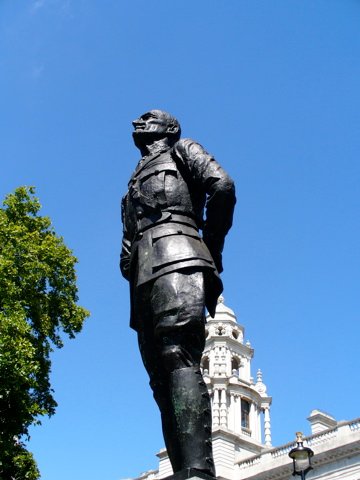
Back outside now, in the adjacent Parliament Square, amongst squabbling peace campers: this is a statue of Jan Smuts, who earns his place on this blog because of the part he played in the creation of the RAF (oh, I forgot to mention: Trenchard and Dowding are buried in the Abbey).
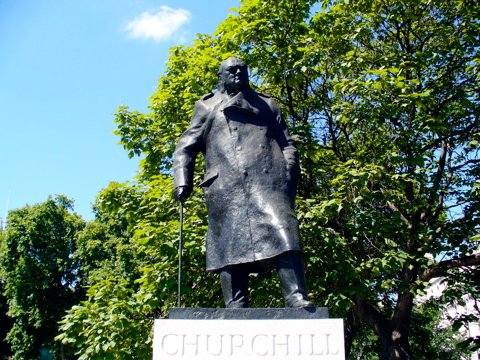
Near Smuts is his admirer, Churchill, defiantly staring eastwards.

And before I descended into the subterranean depths again (i.e., went into Westminster tube), I took another eerie photo of Big Ben, this time with an excess of light, rather than a deficit. Somebody ought to do something; I’m sure that thing must frighten the children.
Jokes aside, it was yet another fantastic outing. The place was packed with tourists (which includes me) but with very good reason. There are places where, spuriously or not, the past seems very close, and Westminster Abbey is one of them.
![]() This work is licensed under a Creative Commons Attribution-NonCommercial-NoDerivatives 4.0 International License.
Permissions beyond the scope of this license may be available at http://airminded.org/copyright/.
This work is licensed under a Creative Commons Attribution-NonCommercial-NoDerivatives 4.0 International License.
Permissions beyond the scope of this license may be available at http://airminded.org/copyright/.

